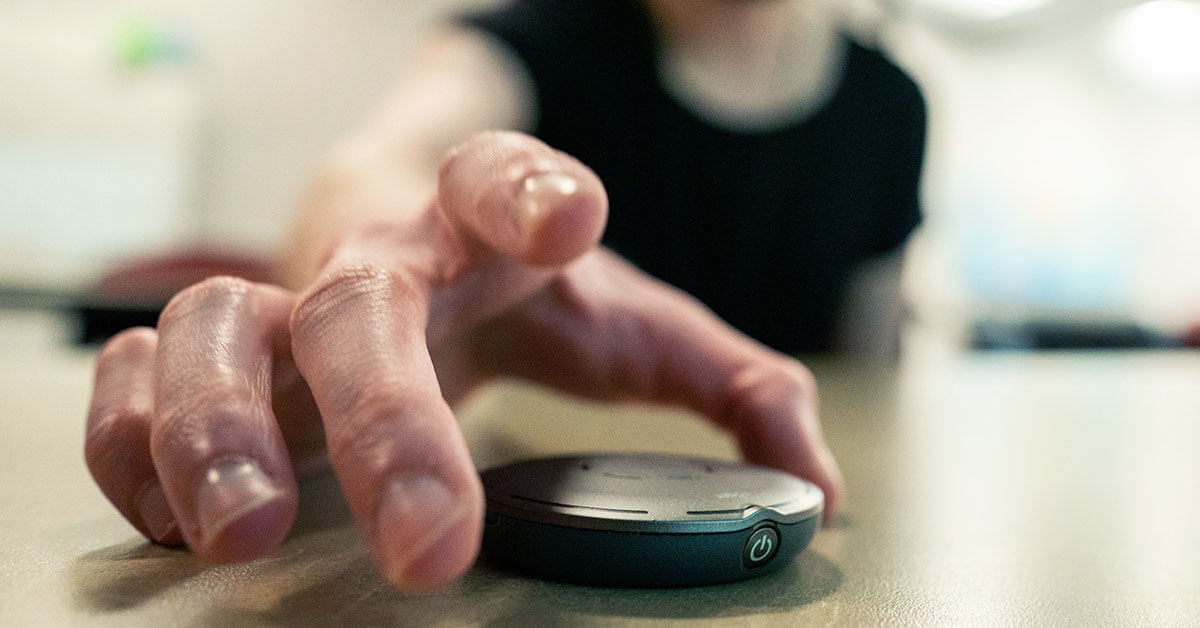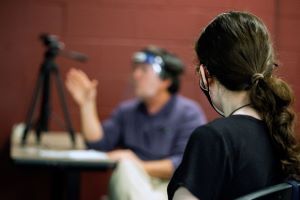
This year marks the 75th observance of National Disability Employment Awareness Month (October) and the 30th anniversary of the Americans with Disabilities Act. It also, of course, marks the outbreak in the United States of the novel coronavirus, which
has caused additional challenges for those who have disabilities—for instance, those with hearing impairments.
“Honestly, I never realized that I rely on seeing faces until masks were common,” said Greta Reel, a first-year Communication major from Jeffersonville, Indiana, who has auditory neuropathy. She wears hearing aids in both ears but also reads
lips. “Masks also muffle what people are saying. When I'm in public, I often have to guess what is being said to me and hope that I have guessed right. … The COVID-19 pandemic has made me feel slightly less independent.”

To help Greta and other students with hearing issues, Bellarmine’s
Office of Accessibility Resource Centers is providing clear masks or face shields for their professors, as well as FM devices that use a wireless microphone to amplify the speaker’s voice. Greta places the device on her desk or table
in her HyFlex classes. “The sound that it picks up goes to my hearing aids,” she said, “and only I can hear it.”
The number of students receiving assistance is up about 7 percent compared to this time last year, after initial accommodation meetings spiked 28 percent in the spring, said Ronda Purdy, director of Accessibility Resource Center. Overall, the office served 13 percent
more students in the 2019-20 academic year than it did the previous year.
While hearing-impaired students have great needs prompted by the pandemic, that number of students at Bellarmine is relatively small, she said. The largest group the office serves is students with ADHD and/or learning disabilities—and they, too,
are struggling.
“Students with ADHD often have deficits in executive-planning skills—self-motivation, problem-solving, organization,” she said. “They need a regular routine, knowing what to expect every day, and we very abruptly interrupted their
routine. They’re used to getting up and going to class, but now it’s, ‘No, you are going to stay in one place. This class is a Teams meeting and you log on at this time; that one is asynchronous. Oh, and this one is just information
on Moodle.’ You have to figure out the format and how it’s going to be delivered and where to go.
“It’s quite a challenge for those students, not to mention the increased self-learning in this online environment.”
.jpg?sfvrsn=7ea37880_4)
The pandemic is also exacerbating students’ anxiety and depression, Purdy said. “Rapid change is increasing that anxiety. Students with depression already want to isolate, and this is making it very
easy to do just that.”
Increased screen time can negatively affect students with migraines or brain injuries, Purdy said. Her office has worked with instructors to allow those students to take tests in paper-and-pencil format, scan them and return them.
Having to conduct all sessions with students through Teams has posed challenges for Purdy and office coordinator Jessie Voigt as well.
“We’ve had to learn a whole new way to connect with new students,” Purdy said. “A big part is getting them comfortable with accommodations and with us—to be comfortable using us as a resource. It’s made that ‘getting
to know you’ part really difficult because there’s a screen there.”
It can also be awkward when students choose not to turn their camera on. “You want to respect their privacy and it’s uncomfortable to say, ‘Hey, turn that camera on,’ but especially if it’s a student who is depressed, you
want to see them,” Purdy said.
The Teams format might help to account for the fact that while the number of student requests overall is up, the number of ongoing consultations is down. But Purdy thinks the added stress of the pandemic is more likely the reason.
“Bellarmine attracts excellent students,” she said. “Our students with disabilities are high-functioning students. I think that students who have a diagnosis but have learned to manage—COVID just triggered this need for them. With
the change in the environment, suddenly they do need accommodations. It pushed those deficits.”